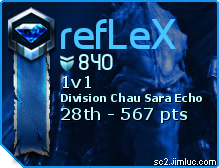| View unanswered posts | View active topics |
It is currently Fri May 15, 2020 8:05 am |
|
All times are UTC - 5 hours |
| Page 1 of 1 |
[ 9 posts ] |
What do this do exactly?
| Author | Message | ||||||||||||||||||
|---|---|---|---|---|---|---|---|---|---|---|---|---|---|---|---|---|---|---|---|
|
Joined: Sat Apr 16, 2011 7:39 pm Posts: 1451 Location: Enjoying Life Country: 
Gender: Male Skype: sazhchocobo Currently Playing: League of Legends, Killing Floor 2, Overwatch Waifu: Cleod9 |
What does Defragmenting your computer mean. Im using Defraggler because someone said it would make my computer faster.
_________________ Trying my best to better myself as a programmer! Please visit my programming blog, any and all tips are welcome!: https://conceptsexplained.wordpress.com |
||||||||||||||||||
| Fri Oct 14, 2011 6:45 pm |
|
||||||||||||||||||
|
Joined: Mon Aug 11, 2008 2:05 pm Posts: 1527 Location: (ノ◕ヮ◕)ノ*♥:・゚✧ |
Well, I'll try to explain in laydude's terms. Say you have three files that were installed one after another; A, B and C. These files are stored in a big, empty space that we'll say is composed of "blocks". Let's also say each of these files take up 10 blocks, and those blocks are stored one after another; first file A's blocks, then file B's blocks, and so on. Now, after a little while, you decide you don't want file B on your hard drive anymore- you delete it, which frees up the blocks it was using. Then you install a new file, file D, which takes up 15 blocks. File D occupies those ten blocks that were previously freed up between A and C, but it needs five more blocks of space. The usual way to solve this problem is to put those five blocks after C, then "chain" the two parts of file D together. But the more this is done due to files being deleted-and subsequently, their space being filled by new files--, the more fragments have to be created, and the longer it takes to seek those files out. If they're all made to be in one neat space-via a program designed to "clean up"--, they'll be found quicker, which generally results in your computer running faster as a whole.
I am not an expert myself, and I did leave a lot out, so this isn't entirely true; it'll give you the proper gist, though. One more thing. Everybody has their preferences on what program to use, but the best free one I've come across is Auslogics Disk Defrag. It's very simple and very efficient! I recommend it highly. e: Oh, one last thing, for realsies. This forum was not intended to offer personal tech support; don't expect regular help from me or anybody else, and please try searching for answers on your own next time. You'll find the internet contains vast information on the thing that allows people to access it efficiently. |
||||||||||||||||||
| Fri Oct 14, 2011 7:21 pm |
|
||||||||||||||||||
|
Joined: Sat Apr 16, 2011 7:39 pm Posts: 1451 Location: Enjoying Life Country: 
Gender: Male Skype: sazhchocobo Currently Playing: League of Legends, Killing Floor 2, Overwatch Waifu: Cleod9 |
Thanks for the help. And I only come here for help when I have already tried the internet.
_________________ Trying my best to better myself as a programmer! Please visit my programming blog, any and all tips are welcome!: https://conceptsexplained.wordpress.com |
||||||||||||||||||
| Fri Oct 14, 2011 8:09 pm |
|
||||||||||||||||||
 Joined: Sat Aug 16, 2008 8:38 am Posts: 6670 Location: Darkest Antartica Country: 
Gender: Male Skype: Thaiberium Currently Playing: The Game |
Whatever you do, don't defrag a solid state drive (SSD)!!!
_________________  |
||||||||||||||||||
| Sat Oct 15, 2011 12:25 pm |
|
||||||||||||||||||
|
Joined: Tue Jun 16, 2009 2:48 am Posts: 834 Location: Australia. Gender: Male Skype: snoble7 |
does that -break- them, or does it just have no effect?
|
||||||||||||||||||
| Sat Oct 15, 2011 7:25 pm |
|
||||||||||||||||||
|
Joined: Mon Aug 11, 2008 2:05 pm Posts: 1527 Location: (ノ◕ヮ◕)ノ*♥:・゚✧ |
It wears them out faster without actually accomplishing anything. It is literally pointless unless you want to spend your free time breaking a perfectly good piece of technology.
|
||||||||||||||||||
| Sat Oct 15, 2011 7:35 pm |
|
||||||||||||||||||
 Joined: Sun Sep 28, 2008 1:38 am Posts: 2286 Location: The Wonderful Land of Aus Gender: Anime Girl |
And how do I know if my drive is SSD?
_________________  Parents - Ray fletcher, Blue Mage(?) Married to - Deux Children - Geno |
||||||||||||||||||
| Thu Oct 27, 2011 4:08 pm |
|
||||||||||||||||||
 Joined: Sat Aug 16, 2008 8:38 am Posts: 6670 Location: Darkest Antartica Country: 
Gender: Male Skype: Thaiberium Currently Playing: The Game |
Open up your hard drive. If there's a needle and a disk, then its a standard hard drive. This is not recommended as dust in the air and f*** up your vacuum sealed hard drive.
_________________  |
||||||||||||||||||
| Fri Oct 28, 2011 4:36 pm |
|
||||||||||||||||||
 Joined: Mon Sep 29, 2008 7:36 pm Posts: 2563 Location: ┐('~`;)┌ Gender: Anime Girl Currently Playing: SC2, SSBB (4168-0287-1402) |
If it cost you like 1293612893761279x as much then its SSD. _________________ 
Adopted by Shounic |
||||||||||||||||||
| Wed Nov 09, 2011 8:49 pm |
|
||||||||||||||||||
| Page 1 of 1 |
[ 9 posts ] |
|
All times are UTC - 5 hours |
Who is online |
Users browsing this forum: No registered users and 1 guest |
| You cannot post new topics in this forum You cannot reply to topics in this forum You cannot edit your posts in this forum You cannot delete your posts in this forum You cannot post attachments in this forum |
